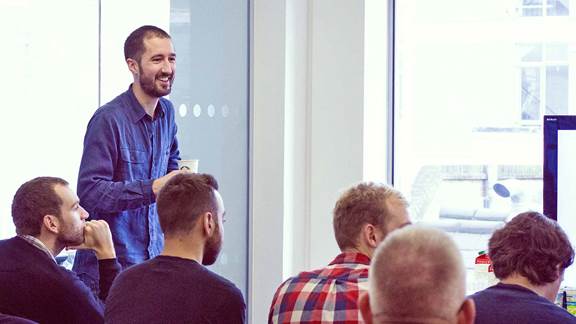What practical steps can a business person take?
So if you are a ‘business person’ tackling a mobile project for the first time, or perhaps with a new team, how can you ensure that you play your part and proactively set up the team for success?
Below are my top line thoughts for what makes a business person good, better and best at championing this Agile manifesto principle.
GOOD
As a business person, attending planning sessions and sprint reviews will help the whole team to ensure that the right items have been prioritised, and that features have been built as expected during a given sprint.
Joining retrospectives also means that you and the team are able to work through any concerns you may have in a safe space through communication, and ultimately leading towards resolution.
However, only touching base during sprint reviews will not allow for you, as the business person, to have direct involvement in the development of features during a sprint. Consequently, significant amends could mean the team has potentially wasted two weeks of work, causing high priority features to be pushed further down the backlog, timelines become more stretched and budgets grow.
BETTER
In addition to attending key sprint ceremonies, the business person should also work with the team to beat up user stories, acceptance criteria and scenarios which outline how the product should behave. Working with the team to identify as many scenarios as possible ensures that everyone is aligned with the expected outcome of each user story, which helps to minimise waste.
However, attending sprint ceremonies and writing scenarios doesn’t guarantee success. Once again, if you are only touching base intermittently, it could mean that whilst building, the developers may come across a scenario that hasn’t been previously covered.
Do they assume that they're building the right thing and carry on, even if they might have to duplicate their effort? Or do they wait, allow themselves to be blocked and potentially waste time?
BEST
To create the most valuable product, it is essential for the business person to have visibility of what the team is working on - at any given point in time.
The best way to achieve this goes beyond sprint ceremonies. The very best decision is for the business person to be co-located with the developers on a day-to-day basis. This enables face-to-face communication, helping to eliminate any ambiguity over requirements, and shortening feedback loops. Obviously, in the real world, co-location with client-side business people every single day isn’t always possible, or for a variety of other reasons, isn’t ideal. This is one of the reasons why our own Product Owners are so essential to our teams here at Kin + Carta. Additionally, however, where co-location isn’t practicable, the principle remains that business owners and product teams should strive for daily communication wherever possible - and preferably, face-to-face.
Not only does this aid prioritisation, it also forges stronger relationships and working together becomes a better, more productive experience. In addition, business people new to more agile ways of working can bring invaluable experience back into their company, or extended teams.
